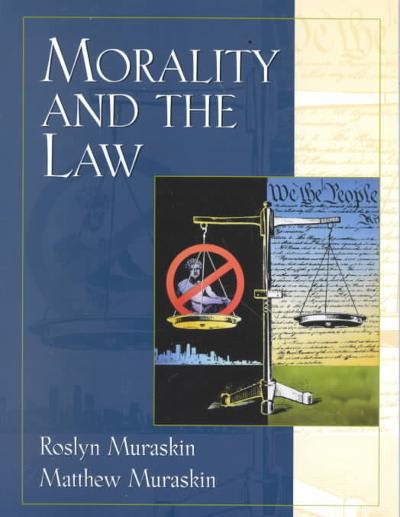Question
Instructions.The following Questions are designed to enhance the Student's understanding of select contract concepts, including meeting of the minds, implied contracts, at will employment contract
Instructions.The following Questions are designed to enhance the Student's understanding of select contract concepts, including "meeting of the minds," "implied contracts," "at will employment contract" and "statute of frauds."The scenarios set forth are based on actual court cases and you will be expected to read, understand and critically think about the contract principles and actual court decisions in those cases.
Section I.A Meeting of the Minds?This Section deals with the common law concepts that determine whether a binding and enforceable contractual agreement between the parties was legally formed.Courts such as the one in the case of In re Plankenhorn, 228 B.R. 638 (N.D. Ohio 1998)(a federal Bankruptcy court in the Northern District of Ohio) will use an objective, reasonable person standard to determine whether a "meeting of the minds" exist.Find the Plankenhorn case using Google Scholar, read it and respond to the following questions.Your Maximum point score for this Section is ten (10) points.
The core issue in this case was whether a valid bankruptcy claim or contract existed.Larry Browneller took his 1963 Chevy sports car to Hubert ("Debtor"), a semi-retired mechanic, and requested that the Debtor repair the car and make it show-worthy.Debtor told him that he could not make it "show quality" and Larry insisted that Hubert do "a damn good job."Debtor kept the car and worked on it for several years with Larry's knowledge.When Hubert finished the work, Larry refused to pay the bill alleging that it was not "show quality" as originally requested.Did the Court agree with Browneller's argument that Debtor did not produce a car that was "show quality" as requested? (3 Points)
Explain whether the Court found that a legally binding and enforceable Contract existed between Browneller and the Debtor and the primary reason for its decision.(5 Points)
Explain why the Court rejected Browneller's claim that the Debtor Hubert was negligent in fixing his Chevy sports car.(2 Points)
Section II.Implied vs. Express Contracts.This Section requires you to read the case of Roger's Backhoe Service, Inc. v. Nichols at the end of Chapter 8 of your eText and respond to the following questions regarding the case.Your Maximum point score for this Section is fifteen (15) points.
Did the Court find that an express or implied agreement existed between the parties?(3 Points)
Explain why the Court found that an implied agreement existed between the parties.(5 Points)
Identify the legal standard that the Court used to determine that such an agreement existed. (4 Points).
Explain whether the Court in the Plankenhorn case discussed in Section I might have properly considered that the Contract at issue there for the repair of Browneller's car was an Implied Contract and why?(3 Points)
Section III.Implied Contracts and At-Will Employment.This Section requires you to read the case of Wooley v. Hoffmann LaRoche at the end of Chapter 8 of your eText and respond to the following questions regarding the case.Your Maximum point score for this Section is fifteen (15) points.This important New Jersey Supreme Court case continues to govern most employment relationships through its common law principles regarding at-will employment and identifies an exception for when an employee-at-will cannot be fired or discharged without cause.Your Maximum point score for this Section is fifteen (15) points.
Why did the trial court dismiss the Plaintiff's Complaint and grant the Defendant Employer's Motion for Summary Judgment?(3 Points).
At the center of the New Jersey Supreme Court's decision was the Employer's Manual for its employees.Explain the importance of the manual from the fired Plaintiff's perspective and the Defendant's explanation of its importance or lack of it in this case.(5 Points).
Explain how the New Jersey Supreme Court decided this case and what was its view of the importance of the Manual?(5 Points).
Do you think the NJ Supreme Court's decision was fair to both parties?Explain. (2 Points).
Section IV.Statute of Frauds.This Section requires you to read the assigned eText regarding the Statute of Frauds and to find/read the case of Cohn v. Fisher, 118 N.J. Super. 286 (Law Div. 1972) through Google Scholar.Once you have read the above, respond to the following questions.Your Maximum point score for this Section is ten (10) points.
The Statute of Frauds under the U.C.C. requires certain contracts for the sale of goods to be evidenced by a writing signed by the party against whom enforcement of the contract is sought.Is the agreement in the Cohn case required to be evidenced by a signed writing?Explain why.(3 Points).
Explain whether the Court found a writing that was sufficient to satisfy the Statute of Frauds in the Cohn case and, if so, what that writing consisted of.(4 Points).
Identify from your reading of the eText three other types of contracts for which the Statute of Frauds requires a signed writing that evidences its material terms.(3 Points)
Section V.Optional Extra Credit.This optional extra credit section offers the opportunity to earn an additional ten (10) extra credit points in connection with this homework assignment.Respond to the following question:
Identify what elements are required in general under the Common Law in order for a legally binding and enforceable agreement to exist?
Step by Step Solution
There are 3 Steps involved in it
Step: 1

Get Instant Access to Expert-Tailored Solutions
See step-by-step solutions with expert insights and AI powered tools for academic success
Step: 2

Step: 3

Ace Your Homework with AI
Get the answers you need in no time with our AI-driven, step-by-step assistance
Get Started


